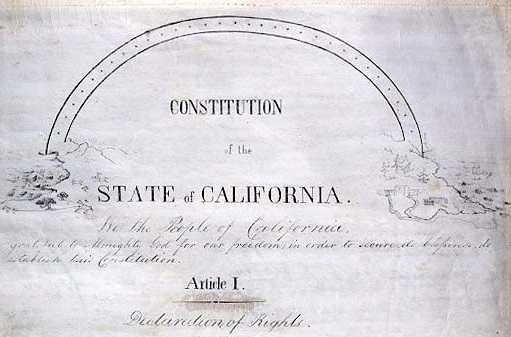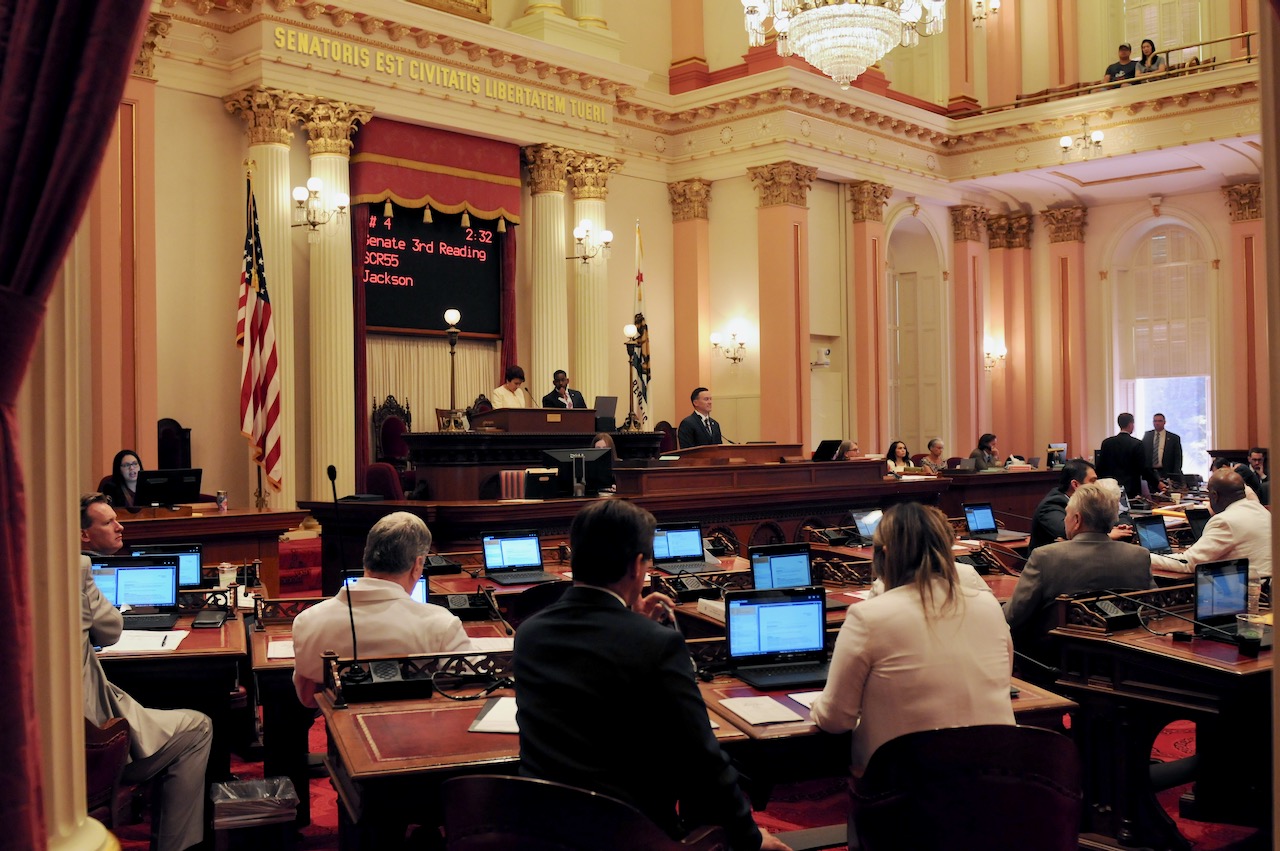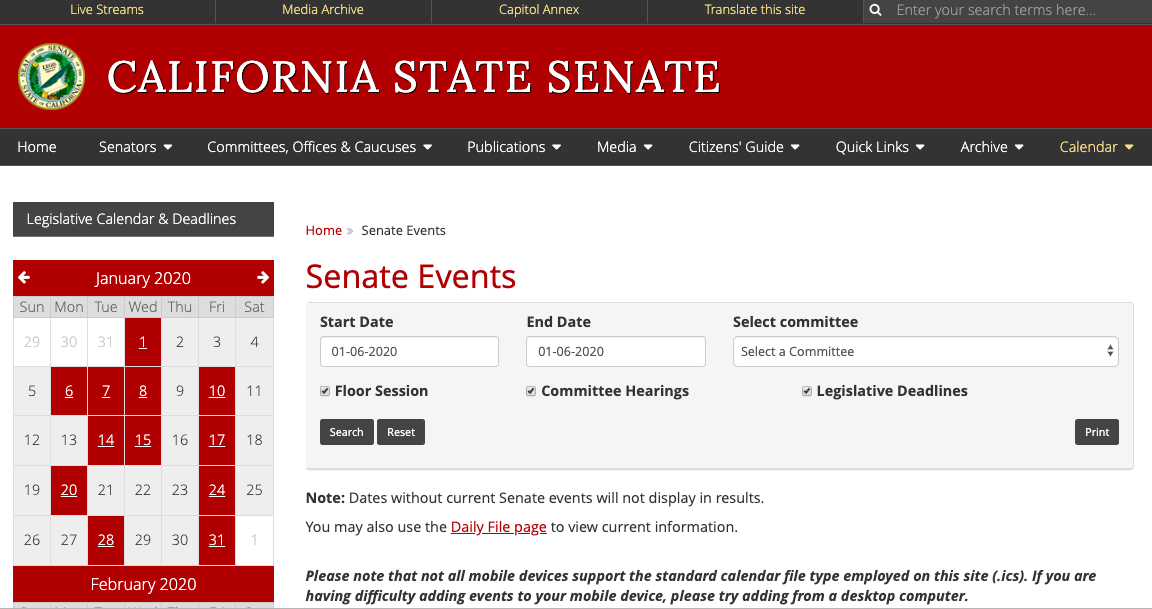
California Constitution. (Photo: www.sos.ca.gov)
Policy Analysis in the Legislative Process
The tendency is to become preoccupied with the solution rather than an underlying problem
By Chris Micheli, April 19, 2019 6:43 am
By Tom Nussbaum and Chris Micheli
Have you ever wondered how the California Legislature goes about analyzing the thousands of proposals that are introduced as bills? And, how does the Legislature’s process for bill analysis differ from policy analysis methodologies used almost everywhere else, including academia and the private sector? The answers to these questions provide some interesting insights into the strengths and weaknesses of California’s legislative process.
For anyone who has seen a bill from the California Legislature in print, one of the first items addressed is a section entitled, “Legislative Counsel’s Digest.” Is this an analysis of the bill? Not really. Instead, the purpose of the Legislative Counsel’s Digest is to succinctly describe current law and then summarize the changes that are proposed in the legislation. The Digest thus describes how the bill proposes to change existing law. Otherwise, the Digest is strictly neutral; it neither evaluates the pros and cons of the proposal nor makes any recommendations.
So, who does the analysis of bills and where do you go to find them? Quite simply, legislative proposals in California are analyzed by the staff of the committees to which they are referred and by the staff of the respective houses prior to a proposal coming up for a floor vote. Thus, a typical bill that makes it into law is analyzed six times: by a policy committee and a fiscal committee in each house and a floor analysis in each house. These analyses are accessible via the California Legislative Information website maintained by the Legislative Counsel.
If you pulled up bill analyses from several different committees, you would notice there is no set process or methodology being applied. Instead, you would note that there seems to be some common elements addressed in most of the analyses, but that each committee and each floor applies their own methodologies. Some policy committees in the Assembly and Senate have well deserved reputations for extensive analyses that include in-depth discussion of existing law and the proposed changes contained in the bill.
And they reflect the intent of the author and explain in detail the arguments for and against the proposed law changes. There are other committees whose analyses are often limited, merely reciting some of the language in the proposed legislation without much discussion that would provide valuable insights for those trying to understand or learn the intent behind changes in the law.
So, there is no fixed policy analysis methodology in the Legislature and the quality of analysis can vary from committee to committee, floor to floor, or even bill to bill. Nonetheless, what are the common elements that are covered in most legislative bill analyses and how do these analyses differ from policy analysis methodologies taught in academia and used almost everywhere else?
When we examine the bill analysis methodologies used in the California Legislature (and most other legislative bodies), we find the policy analysis is focused on the evaluation of a specific proposal. In other words, rather than beginning the analysis with a definition of the problem, the analysis emanates from a proposed solution (i.e., a bill). This approach is understandable given that most legislative processes begin with the introduction of a bill that contains the text of a specific solution to try and address a public policy problem.
While legislative bill analysis methodologies typically focus on the evaluation of a specific proposal, policy analysis methodologies taught in academia and used almost everywhere else tend to start from a definition of the problem. Once the problem is defined, the analysis turns to identifying and evaluating the various alternatives for addressing the problem. The policy analysis is a rigorous, multi-step process that involves a thorough analysis of the various alternative means of addressing the problem.
While a legislative bill analysis of a specific solution can involve extensive research and considerable evaluation, there are pitfalls to this approach. Given the nature of the legislative process, the tendency is to become preoccupied with the solution and pay less attention to identifying and analyzing the various solutions to an underlying problem. Authors of legislation are understandably inclined to focus on building the case for the particular solution for which they are advocating. All too often they tend to overlook the underlying steps of defining the problem, identifying alternatives, selecting criteria, and projecting outcomes.
And, all too often, the staff who analyze legislative measures also overlook these underlying steps. As a consequence, legislatures often get stuck in a contest of wills over specific solutions instead of first attempting to define and agree upon the underlying problem. Without a clear understanding and agreement on the problem they are attempting to address, legislators deprive themselves of a key element in reaching consensus.
There are some practical realities that make if difficult for legislative bodies to apply traditional policy analysis methodologies. With nearly 2,500 bills introduced each year in California (and upwards of 8,000 amendments made to these bills) it is an unrealistic expectation that legislative staff would have the time to engage in such thorough analyses on every bill and every amendment. On the other hand, while a thorough analysis of each bill and each amendment might be impossible, this does not mean that traditional policy analysis cannot be infused into at least a portion of the legislative process.
Decisions about how and when to infuse traditional policy analysis methodology into the legislative process are appropriately made by the leadership of the respective houses. One possibility would be to hold authors of legislation accountable to conduct and produce a formal policy analysis on each piece of legislation and major amendment being proposed. These formal analyses would accompany the proposal, thereby providing committee and floor staff something to review and critique. Another possibility would be for committee chairs and floor leaders to have discretion as to the measures needing a full scale policy analysis prior to a vote.
Regardless of the method chosen, we believe that additional time and effort needs to be spent on analyzing both the problems and the possible solutions before legislation is considered, let alone adopted. In the rush “to do something,” the Legislature often needs to return to the policy issue because the prior legislation did not accomplish what it had intended. It was either inadequate to effectively solve the problem being addressed or it was poorly crafted and needs to be revisited. In either instance, the policy analysis was probably limited and perhaps a more comprehensive analysis would have resulted in a better policy solution.
In summary, while most legislative bodies use policy analysis methodologies that focus on evaluating specific solutions, it is imperative that the underlying policy analysis steps not be overlooked. Even though legislative bodies may be concentrating on the evaluation of specific solutions, they cannot properly do so unless they have the discipline to define the problem, identify and evaluate the various alternatives, and formulate the best solution. The legislative process would be better served in the long-term by providing greater policy analysis of both the problems and the solutions being debated.
Tom Nussbaum is the former Chancellor of the California Community Colleges. Chris Micheli is a lobbyist with Aprea & Micheli, Inc. Both are Adjunct Professors of Law at McGeorge School of Law.
- Port Facility Construction in California - August 11, 2025
- Division of Real Property in California - August 10, 2025
- Emergency Protective Orders for Preventing Domestic Violence - August 9, 2025







